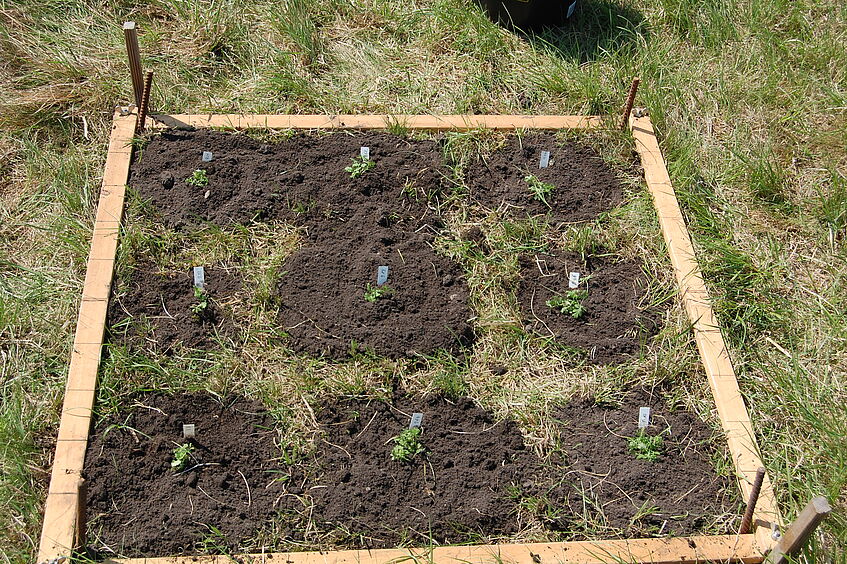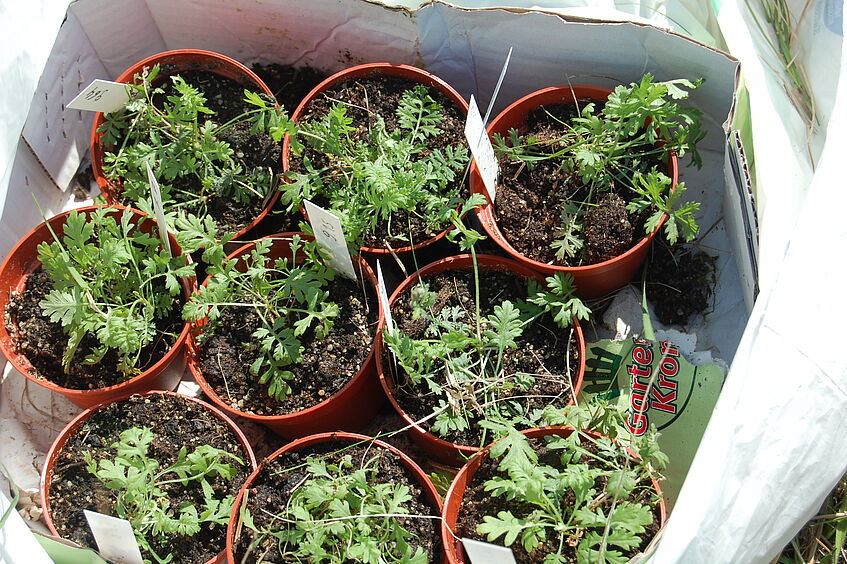Preservation of Artemisia laciniata in the Zitzmannsdorfer meadows

Ausgesetzte Pflanzen aus Gewebekultur © Andrea Kodym

Pflanzen aus Gewebekultur © Andrea Kodym

Blühende Pflanzen im Botanischen Garten © Andrea Kodym

Samenernte © Andrea Kodym
The Siberian wormwood (Artemisia laciniata) belongs to the composite plants (family Asteraceae). It grows primarily in steppe landscapes, with its main distribution range lying in Asia. In Europe only a tiny population remains: in the Zitzmannsdorfer meadows in the Lake Neusiedler See – Seewinkel National Park. The population comprises a mere 40 plants. The next closest site lies in far-away southern Russia. The Botanical Garden and the Department of Pharmacognosy of the University of Vienna, along with other partners, have combined forces to help preserve this species.
As of 2015, the Lake Neusiedler See – Seewinkel National Park, the Biological Station Neusiedler See and the University of Vienna's Botanical Garden have been monitoring the current population size of the Siberian wormwood and have initiated measures to strengthen the vitality of the adult plants and promote regeneration on site. Moreover, the regeneration capacity of the plants was tested under cultivation conditions involving germination experiments, horticultural propagation and micropropagation in sterile tissue cultures.
The current low number of adult plants and the small size of the populated area have reached a critical level. Although the conservation efforts here are very time consuming, the preconditions for establishing a viable population of Artemisia laciniata at this natural site provide reason for hope. Nonetheless, securing the species' long-term future here will require setting hundreds of plants across this area. The current project is designed to achieve this.
Beyond developing a viable wild population, the Siberian wormwood is also being cultivated in the living collection of the university's Botanical Garden in order to help ensure the species' survival. In addition, its seeds are to be stored in the Kew Millennium Seedbank and the seedbank of the University of Natural Resources and Life Sciences, Vienna.
Project partners: Botanical Garden of the University of Vienna; Department of Pharmacognosy – University of Vienna; Biological Station Neusiedler See; Lake Neusiedler See – Seewinkel National Park; Kew Millennium Seedbank; University of Natural Resources and Life Sciences – seedbank.
Project leads: Andrea Kodym and Frank Schumacher
Project duration: 2019-2022
